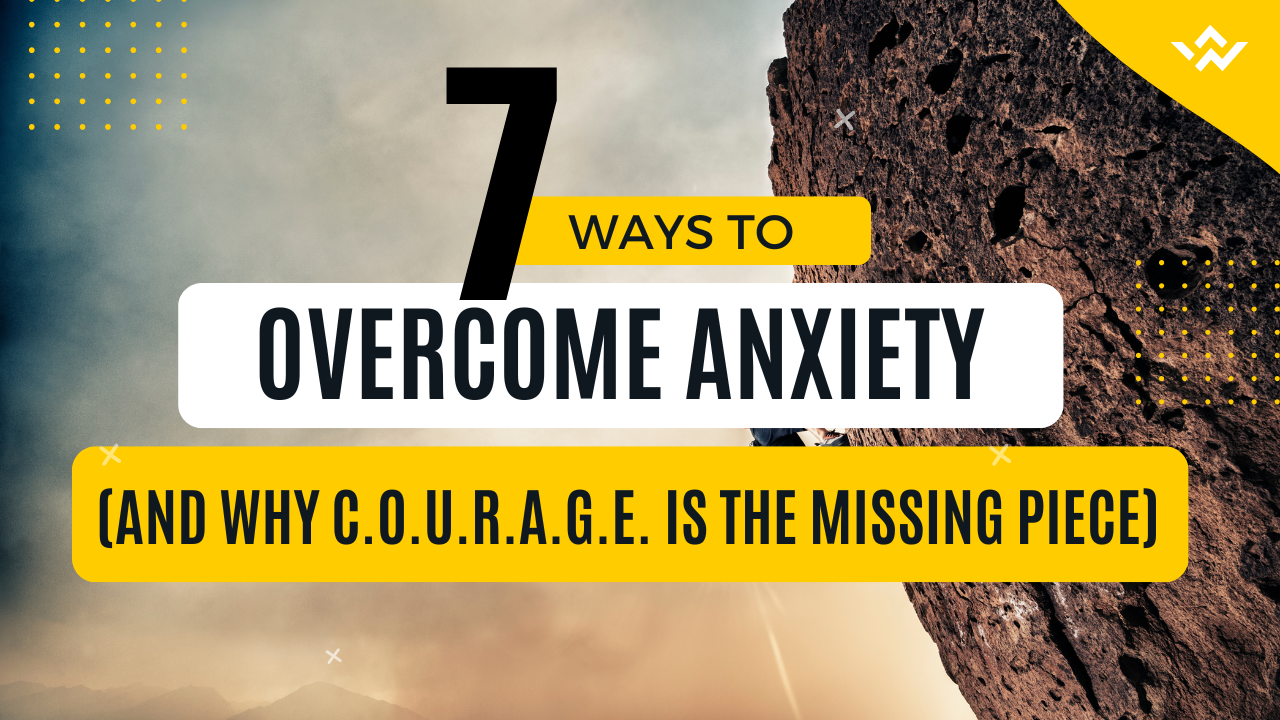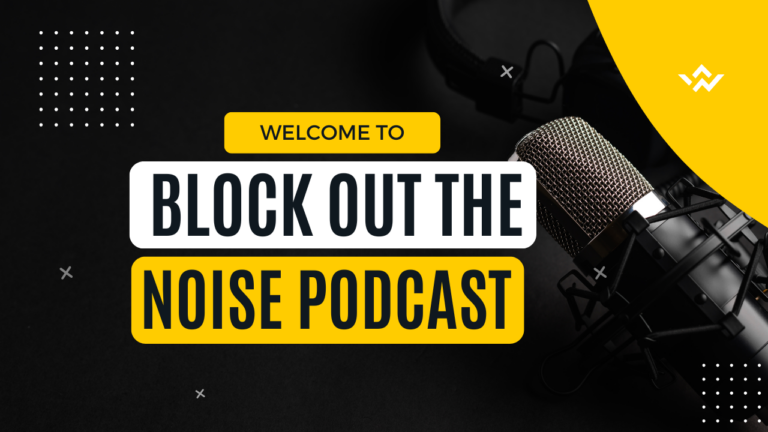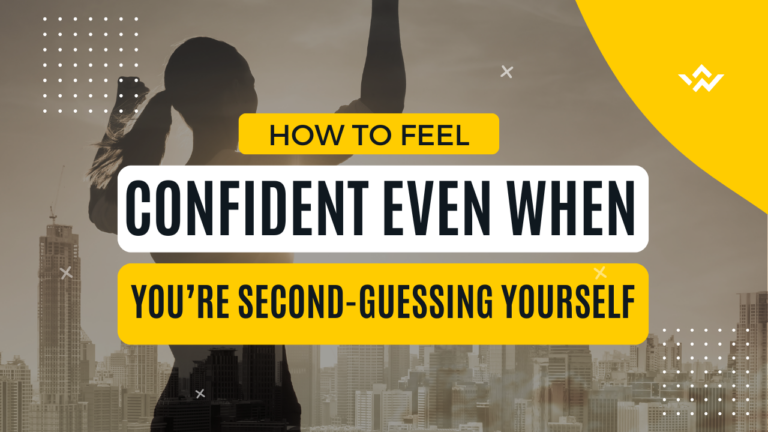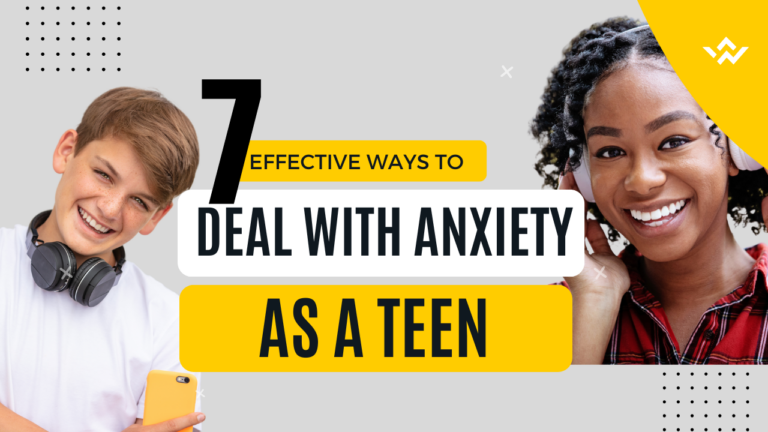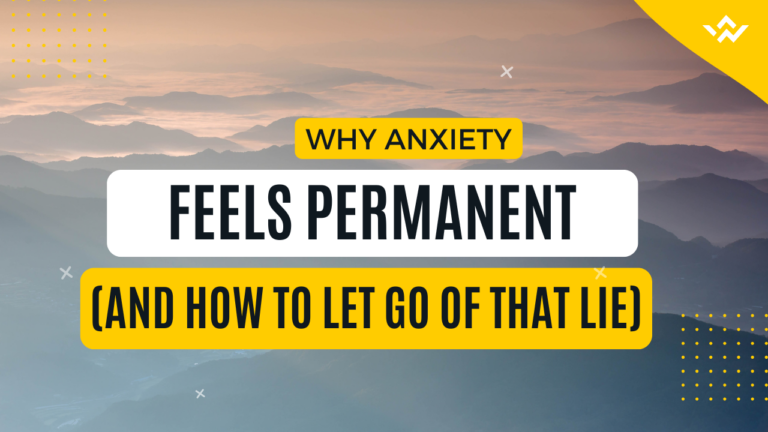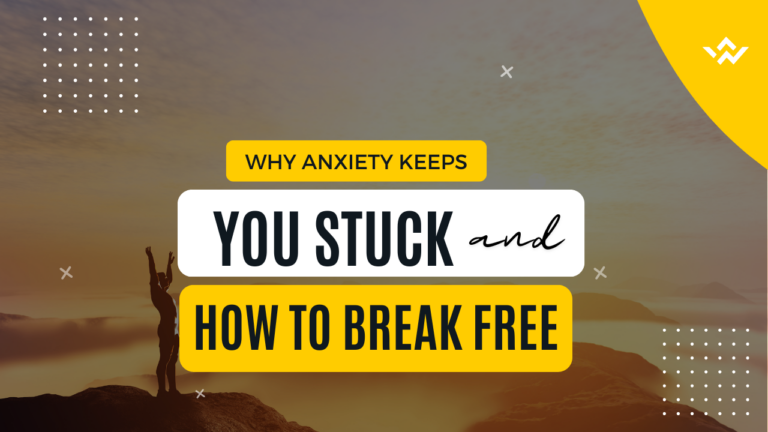Ever Feel Like You’ve Tried Everything for Your Anxiety?
You’ve journaled. You’ve deep-breathed. You’ve told yourself, “Just think positive.” But somehow, anxiety keeps creeping back in. It’s frustrating, exhausting, and makes you wonder if something’s wrong with you.
Let’s clear that up right now: you’re not doing it wrong—you’re just missing the right framework.
In this post, we’ll walk through the C.O.U.R.A.G.E. Method, a powerful and practical way to take small steps forward—even when anxiety feels overwhelming. These are real ways to overcome anxiety—especially when it feels like nothing else is working.
If you haven’t yet, listen to Episode 5 of the Block Out the Noise Podcast for the full story behind how and why this method works. And don’t forget to check out our blog on embracing confidence when you’re filled with self-doubt and how to stop anxiety from running your life for even more tools to help you feel in control.
👇 Here’s a breakdown of what we’ll cover. Feel free to jump to the section that fits what you need today—or scroll through to take it all in.
What Is the C.O.U.R.A.G.E. Method?
C.O.U.R.A.G.E. isn’t about being fearless. It’s about learning how to keep going—even when anxiety is loud. Each letter stands for a mindset shift or tool that helps you face anxiety in a more doable, realistic way:
- C – Catch the Negative Patterns
- O – Open Up to Possibilities
- U – Understand That Fear Isn’t Fact
- R – Respond with Self-Compassion
- A – Act Despite Uncertainty
- G – Grow Through Experience
- E – Embrace the Wins
Let’s break them down step by step.
1. Catch the Negative Patterns
Anxiety has a sneaky way of tricking your brain into spirals.
- “I’m going to fail.”
- “Everyone’s judging me.”
- “Why do I always mess this up?”
When these thoughts start, pause and name what’s happening.
Say: “I’m in a loop right now.” or “These thoughts aren’t truth—they’re fear.”
That small moment of awareness is huge. It puts you back in control. You’re not letting anxiety boss you around. You’re noticing it and choosing a different path.
Want help recognizing your anxiety patterns? Our post on why anxiety feels like part of your identity explains this in more depth.
Image Placement #1: Teen looking in a mirror with a thought bubble showing chaotic anxious thoughts—some crossed out, some rewritten.
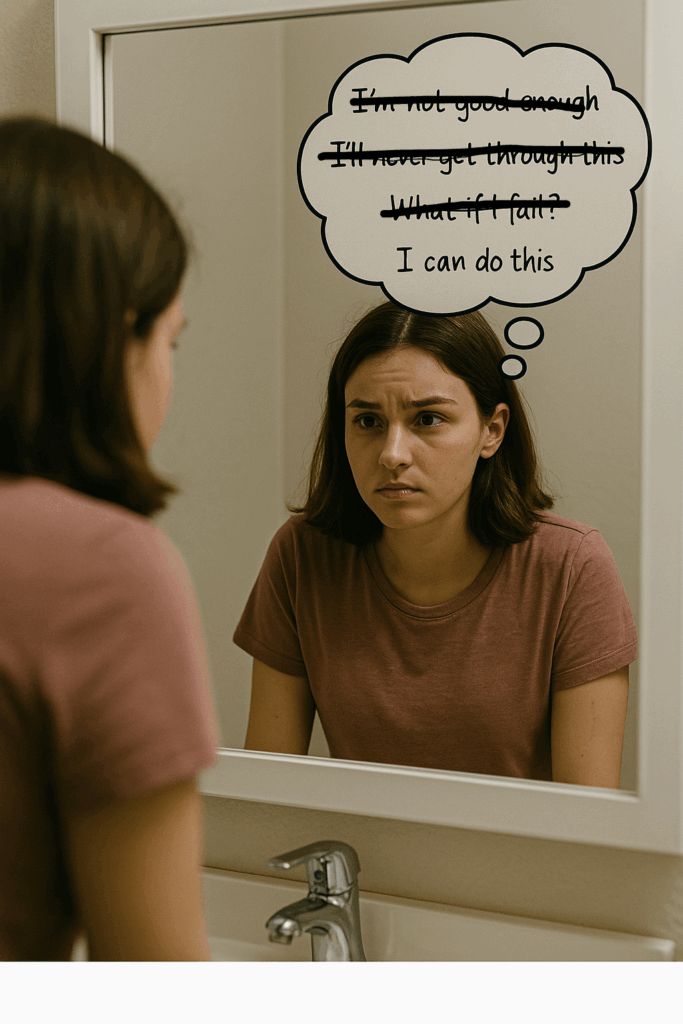
2. Open Up to Possibilities
Anxiety shuts doors. It tells you:
- “That friend won’t text you back.”
- “You’ll fail the test, so don’t even try.”
- “You’ll just embarrass yourself.”
But what if it goes right?
Opening up to possibilities means giving space to hope. It means asking:
- “What if this actually works?”
- “What if I feel proud of myself afterward?”
- “What if I surprise myself?”
Even writing down one positive outcome you hope for can rewire your brain to see more than just the worst-case scenario.
3. Understand That Fear Isn’t Fact
Fear feels real because it’s loud and intense. But that doesn’t mean it’s the truth.
- Fear says: “They’ll think you’re annoying.”
- Reality says: “You’ve had kind, positive conversations with them before.”
The next time fear shows up, say:
“This is just the worst-case version. It’s not a guarantee.”
You don’t have to fight fear. You just have to stop letting it drive the car.
Need help making that separation? Read our post on 7 Ways to Deal with Anxiety as a Teen for simple ways to ground yourself in what’s true.
Image Placement #2: A split-screen visual showing fear-filled predictions on one side and calm, fact-based reminders on the other.

4. Respond with Self-Compassion
Most people with anxiety are way too hard on themselves.
“You should have known better.” “Why did you say that?” “No wonder you messed it up.”
Sound familiar? Then here’s your challenge:
Try saying to yourself what you’d say to a best friend.
“It’s okay to make mistakes. You were doing your best.”
Self-compassion doesn’t mean making excuses. It means giving yourself the same love and patience you’d offer anyone else.
When you treat yourself with kindness, anxiety loses its grip. You’re no longer piling shame on top of fear—you’re building inner safety.
5. Act Despite Uncertainty
Waiting until you feel 100% ready will keep you stuck forever.
The truth is, most brave decisions are made while still feeling unsure.
- Trying out for a team even though you’re nervous
- Starting a conversation even if your voice shakes
- Signing up for the thing you’ve been thinking about for weeks
Each time you act before you feel “ready,” you tell your brain: “I can do hard things.”
Even if the result isn’t perfect, the act of showing up is what builds confidence.
Image Placement #3: A teen standing at a fork in the road labeled “Stay Stuck” and “Try Anyway”—with a quiet but brave expression.

6. Grow Through Experience
Growth doesn’t happen in your comfort zone.
It happens when:
- You try and fail, then try again.
- You reflect instead of judge yourself.
- You look back and realize, “I’ve come further than I thought.”
Examples of growth through experience might look like:
- Finally going to a group event and realizing it wasn’t awful
- Standing up for yourself even if your hands shook
- Choosing a different response in a stressful situation
Growth isn’t always obvious, but it’s always there if you look.
7. Embrace the Wins (Even the Tiny Ones)
This might be the most important step of all.
You did the hard thing. You made the choice. You showed up.
Did you celebrate it?
We often skip over our wins because we think they don’t “count.” But what if we treated small wins like big ones?
- Getting out of bed when you didn’t want to? Win.
- Sending the scary text? Win.
- Talking to your teacher about a hard grade? Huge win.
The more you embrace the wins—the more you believe you’re capable.
For more on this, don’t miss our blog: How to Feel Confident Even When You’re Second-Guessing Yourself. It shows you how to stop brushing off your progress and start owning it.
FAQs: Understanding and Using the C.O.U.R.A.G.E. Method
Final Thoughts: You Don’t Need to Be Fearless to Move Forward
Anxiety wants you to believe that you have to be fearless before you can do anything brave.
But the truth is — courage is what you do in the presence of fear, not the absence of it.
The C.O.U.R.A.G.E. Method isn’t about fixing everything overnight. It’s about learning how to support yourself through the hard moments. It’s about progress, not perfection. One moment of strength. One breath of self-kindness. One step forward at a time.
You don’t need to master every tool all at once. You just need to begin — and trust that you can come back to these tools any time you need them.
✨ Want something to hold onto? Download the free Anxiety Survival Toolkit — it’s got all the steps of C.O.U.R.A.G.E. broken down so you can access them when you need them most.
🧠 Need more support? If you’re in Illinois, Davis-Smith Mental Health offers counseling services tailored for teens and young adults. Not in Illinois? You can search for a licensed therapist through Psychology Today.
👥 Craving connection? Join our Facebook Group where others just like you are learning to block out the noise and support one another through it.
Thank you again so much for reading.
Until next time
Keep moving forward. Trust yourself.
And never forget: You have what it takes to block out the noise.

